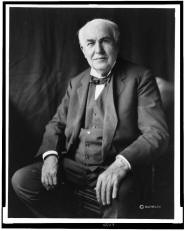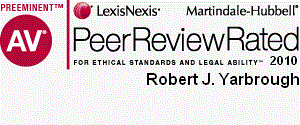Newsletter Issue 53 - July 2013
In this issue:
Fair use in copyright
Removing material from social media
Attack on intellectual property
Non-disclosure agreements
Ask Dr. Copyright
Dear Doc:
I know you've explained the legal concept of "fair use" before, but
I have a question about that. Does it infringe an author's copyright
in a book to paraphrase one sentence from the book in a movie, if
you give credit to the author, or is it fair use?
Sincerely,
Absolom Absolom, Mississippi
Dear AbAb:
Funny you would ask that question, since it is a paraphrase of one
asked by United States District Judge Michael P. Mills in his recent
decision in
Faulkner Literary Rights LLC v. Sony. In that suit, the heirs of
William Faulkner sued Sony Pictures, which distributed Woody Allen's
movie
Midnight in Paris. In the movie, Owen Wilson's character
paraphrases Faulkner's novel, Requiem for a Nun, when he says, "The
past is not dead. Actually, it's not even past. You know who said
that? Faulkner, and he was right. I met him too. I ran into him at a
dinner party."
The actual sentences from the novel are, "The past is never dead.
It's not even past."
Given the obvious and serious legal issues at stake, the Faulkner
heirs sued for violation of the Lanham Act and the Copyright Act. On
a motion by Sony to dismiss the case, the judge read the book,
watched the movie, and expressed his gratitude that he had not been
asked to compare The Sound and the Fury with
Sharknado.
The legal question, however, turned on what the Court saw as, "(1)
whether the affirmative defense raised to the copyright infringement
claim can properly be considered on a motion to dismiss; (2) whether
the use in Midnight is justified under a de minimis copyright
analysis; (3) if the alleged infringement is not de minimis, whether
or not it constitutes fair use; (4) whether Faulkner's Lanham Act
claim has merit."
Judge Mills, in his 17 page memorandum opinion, gives a textbook
lesson in fair use analysis. It all really comes down in the end,
however, to his belief that Woody Allen has created a,
"transmogrification in medium" by taking a sentence from the novel
and using it in a different medium (film) and for a different
literary purpose. According to the Merriam-Webster Dictionary,
"transmogrify" means, "to change or alter greatly and often with
grotesque or humorous effect." Ahhhh... so THAT's what Woody Allen
did!
So you see, Ab, it's fair to misquote a famous author of serious
literature, if you do it in film, with comic effect. So I guess, we
can try it in a law firm newsletter, too... As Woody Allen once
said, "I believe there is something out there watching us.
Unfortunately, it's the government." (But then again, that's a real
quote.)
If you need to paraphrase a famous person, it would be good to check
with the attorneys at LW&H - they're not quite famous, but they do
know a lot about copyright law.
Until next month...
The "Doc"
The DMCA to the Rescue (Maybe) ...
In a recent embarrassing
broadcast by KTVU television of San Francisco, the morning
anchor, Tori Campbell, identified the pilots of the recent San
Francisco Asiana airline crash as "Captain Sum Ting Wong," "Wi Tu
Lo," "Ho Lee Fuk," and "Bang Ding Ow." As she read the names,
Campbell didn't flinch and, even more perplexing, why didn't the
station snag the racist script before airing it? To its credit, KTVU
made a quick public apology and
fired some employees. The station was still faced with a
newscast gone viral. Just how would they remove all the copies of
the broadcast on YouTube and other popular web sites?
Digital Millennium Copyright Act (DMCA) to the rescue! Under the
DMCA, a 1998 amendment to the US Copyright Act, copyright owners may
request online service providers to take down works, which have been
posted online without the owner's permission. We have written about
take down notices in previous posts. Service providers generally
obey such requests to avoid liability for the illegal acts of their
online subscribers. And so, under the theory that the video posters
had essentially stolen copies of the embarrassing newscast, KTVU
undertook a "successful" campaign of sending "take down notices" to
various web sites such as YouTube. But how successful were they?
Well, if you really wanted to see the broadcast, you could find it
on Bit Torrent and other file sharing sources but for the mainstream
web surfers, KTVU's campaign appeared largely successful.
KTVU may have been satisfied, but copyright lawyers were not. There
is a very compelling argument that the KTVU newscast was not
protected by copyright law at all. Section 107 of the U.S. Copyright
Act places limitations on the exclusive rights granted by the Act.
Copies of works used for purposes such as criticism, comment
(including parody), and news reporting are not, under the Section
107, infringing. Rather, such use constitutes "fair use." Certainly,
most people who posted copies of the broadcast did so for no purpose
other than criticism, comment, news or parody even it they thought
it was funny. If they were posted for racist purposes, perhaps, KTVU
has an argument but many, if not the majority of postings, were
comments upon the stupidity and poor management of the KTVU
newsroom. Based on the fair use theory, bloggers at
The Desk submitted counter-notifications with YouTube demanding
that the KTVU videos be reinstated. They were apparently successful
given that the broadcast is still available
here. The KTVU incident, nevertheless, demonstrates how creative
use of copyright law can be used for reputation management even if
the results are short-lived.
New Rules, New Strategies for Innovators
The past 15 years have seen an unprecedented attack on patents
and patent-owners in the United States. Orchestrated by foreign
nations, multinational corporations, and a variety of other groups,
largely funded by similar vested interests, this attack has reduced
much of the value formerly associated with patented innovations. In
past issues of our newsletter we have described how patent owners
can no longer realistically expect to block sales of products that
infringe their patents through the injunction process, how
infringers can conspire to divide patented processes among several
actors to avoid infringement, how multiple infringers must now be
sued separately, rather than joined in a single action, and how
delays at the Patent Office and increasing fees put university
researchers, solo inventors, and small companies at a disadvantage.
We have also been counseling our clients to help them construct
valuable patent strategies.
In the latest round of anti-patent actions, a committee of the
Federal Courts including some noted judges and attorneys has issued
a
model order that they recommend be adopted by federal trial
courts to govern patent suits. Such model orders are usually adopted
quickly and without significant change by courts around the country.
What is troubling about the present document, "A MODEL ORDER
LIMITING EXCESS PATENT CLAIMS AND PRIOR ART" is that for the history
of our patent system, which dates back to the time of Thomas
Jefferson, inventors have always been able to present claims in as
much detail as they wish, so that their patents would clearly and
particularly cover all aspects of their inventions, and, at least
since the 1950s, inventors and their attorneys have been required by
both the Patent Law and the rules of the Patent Office to submit
every relevant item of prior art of which they were aware. The
background of the model order cites a study that shows that
litigated patents contain an average of 24 claims, and cite 31 prior
art references, which the committee calls, "problematically
excessive."
Some recent cases have seen individual judges impose limits on
patent owners, requiring that they limit the number of patents in a
suit, and that they throw away claims in the patents that they
assert to reach some arbitrarily small number. In other cases, the
number of products accused of infringement has been limited by court
order. All of this trimming is claimed to streamline cases and to
promote the administration of justice. In reality, however, such
rules are evidence that our judicial system often fails to handle
the technical complexity of our modern technological world. When it
takes teams of hundreds of researchers years of effort to develop
and commercialize complex inventions such as synthetic proteins,
chips with millions of components, and software with tens of
millions of lines of code, the refusal of our courts to expend the
mental energy needed to understand and to protect such innovations
harms innovators. For courts to say to inventors, you have done the
hard work of creating value, but we require you to be able to
explain it to judges and juries in monosyllabic terms, and to
choose, "not more than ten claims from each patent, and not more
than a total of 32 claims," means that for some inventors, they will
have a more difficult task to defend the value that they create.
Inventors must and will respond. Already, we are counseling clients
to submit more patent applications with fewer claims per
application. In litigation, the proposed limits will mean that
separate law suits will have to be filed on small groups of patents
against the same defendant. The erosion of the patent system has
caused some innovators to opt for trade secrecy, at least in part,
rather than patenting every aspect of their inventions, and this
impoverishes our entire society, because it keeps technical advances
out of the public view, which slows follow-on innovation.
We are confident that Americans will continue to innovate, despite
the limits being imposed on the patent system. We are confident that
we, and others who value our tradition of individual innovation will
continue to find strategies to protect the value generated by
inventors. Because we believe in the long-term value of innovation
and the patent system that protects innovation, we at LW&H continue
to develop new strategies for our clients, and particularly
university researchers, garage inventors, startup companies, and
established concerns to implement effective and efficient legal
strategies for protecting their inventions.
So You Think Your Trade Secrets Are Protected...

It's time for a story. We'll start with the moral - read your
non-disclosure agreements and comply with ALL of the requirements of
the agreement to keep your information secret. Back to the story:
In license negotiations for an invention, Convolve and another party
signed a non-disclosure agreement. Like many non-disclosure
agreements, the agreement required that the person disclosing secret
information designate the information as confidential. Convolve
revealed trade secrets to the other party in reliance on the
agreement, but failed to designate the trade secrets as
confidential. The license negotiations fell through and,
predictably, the other party used the trade secrets. Convolve sued,
arguing that the trade secrets were protected by the non-disclosure
agreement and also by trade secret law.
Convolve lost on the trade secret claims, both at trial and on
appeal. The
Federal Circuit Court of Appeals held that Convolve's failure to
designate the trade secrets as confidential according to the
agreement meant that the trade secrets were not covered by the
agreement. The other party was free to use the trade secrets in any
way that it desired.
Convolve also lost on its trade secret law claims. The Federal
Circuit held that the agreement trumped trade secret law. In short,
Convolve waived its other trade secret rights by signing the
non-disclosure agreement.
In the give-and-take of a business negotiation, information can be
disclosed in all sorts of ways - verbally over lunch, in e-mails or
texts, in demonstrations and plant tours. Some of the information
disclosed will be confidential and some will not. You and every
person on your team who communicates with another party under a
non-disclosure agreement MUST be aware of what information is
confidential and the necessary steps to protect the confidential
information under a non-disclosure agreement.
If you are the party disclosing information, another way to protect
yourself is to make sure that the agreement protects all disclosed
information without requiring a specific designation and that the
rights of the disclosing party are in addition to its rights under
trade secret law.

